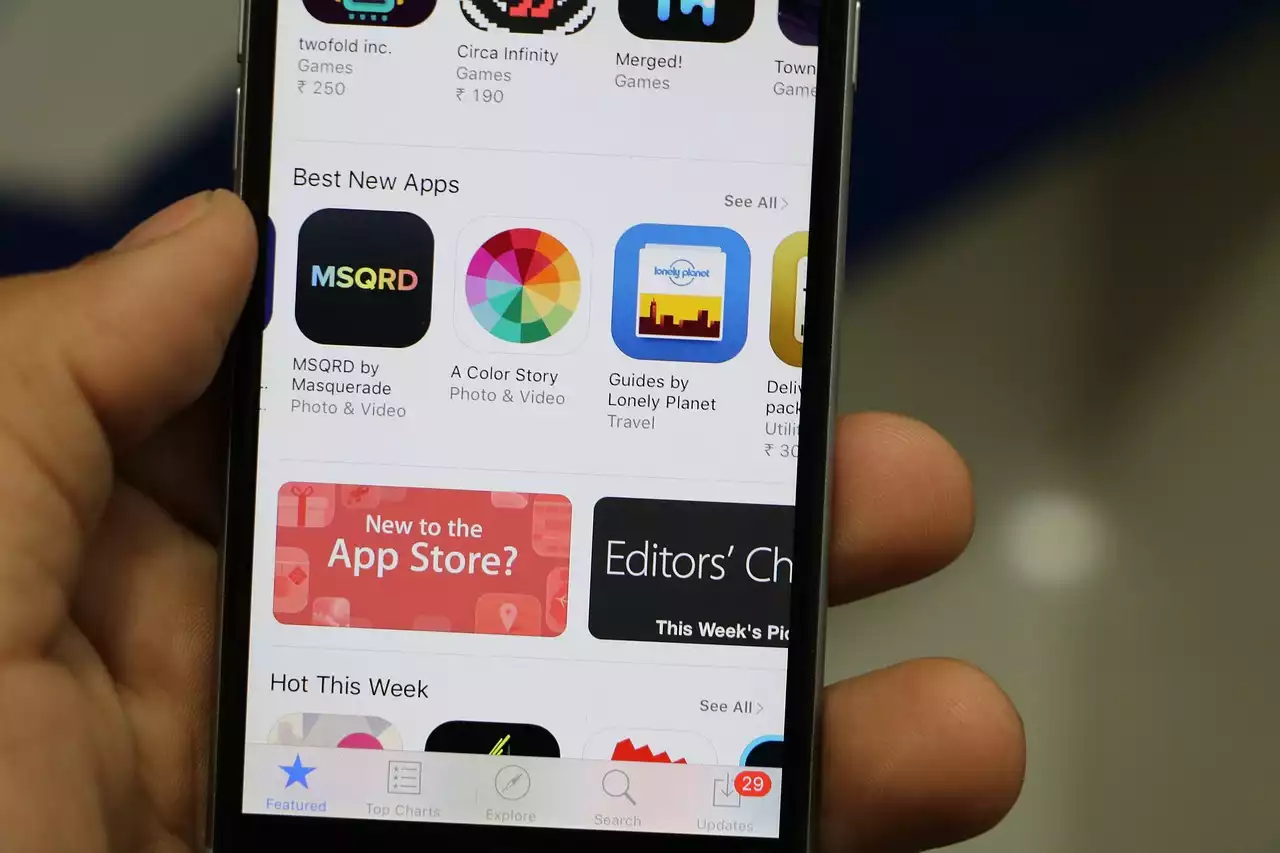Why is ASO important?
App Store Optimization (ASO) is essential for any app developer who wants to make their app visible and successful in the app stores. ASO is important because it helps you to improve your app's visibility, increase downloads, and ultimately drive revenue. With millions of apps available in the app stores, it's very easy for your app to get lost in the crowd. This is where ASO comes in - it helps you to stand out from the competition and make your app more discoverable to potential users.
ASO is important because it helps you to optimize your app's visibility in the app stores. By optimizing your app's title, description, and keywords, you can ensure that your app is more visible to potential users. This can result in more downloads and ultimately more revenue for your app. In addition, ASO can help you to improve your app's user acquisition. By optimizing your app's icon, screenshots, and video preview, you can make your app more appealing to potential users and increase the likelihood that they will download and use your app.
ASO is also important because it can help you to improve your app's user retention. By optimizing your app's user reviews, you can improve the overall user experience and encourage users to continue using your app. This can result in more positive reviews, higher ratings, and ultimately more downloads and revenue for your app.
ASO vs. SEO
App Store Optimization (ASO) and Search Engine Optimization (SEO) are two different strategies that are used to improve the visibility of digital content. ASO is focused on optimizing mobile apps for the app stores, while SEO is focused on optimizing websites for search engines like Google.
While ASO and SEO are two different strategies, they share some similarities. Both strategies involve keyword research, on-page optimization, and off-page optimization. In addition, both strategies are focused on improving visibility and driving more traffic to the digital content.
However, there are also some key differences between ASO and SEO. One of the biggest differences is that ASO is focused on optimizing for a specific app store, while SEO is focused on optimizing for search engines in general. In addition, ASO is focused on optimizing for mobile devices, while SEO is focused on optimizing for desktop and mobile devices.
Another difference between ASO and SEO is that ASO is more focused on user engagement and retention. ASO involves optimizing user reviews, ratings, and other user engagement metrics, while SEO is more focused on driving traffic to a website. Finally, ASO is more focused on optimizing for conversions, while SEO is more focused on optimizing for traffic.
Understanding App Store algorithms
App Store algorithms are complex systems that are used to determine which apps are displayed in the app store search results and how they are ranked. These algorithms take a wide range of factors into account, including app title, description, keywords, user reviews, ratings, and engagement metrics.
One of the most important factors that app store algorithms take into account is relevance. App store algorithms are designed to display apps that are relevant to the user's search query. This means that if you want your app to be displayed in the search results, you need to make sure that your app's title, description, and keywords are relevant to the user's search query.
Another important factor that app store algorithms take into account is user engagement. App store algorithms are designed to display apps that are popular and engaging. This means that if you want your app to be displayed in the search results and ranked higher, you need to make sure that your app has a high rating, positive reviews, and high engagement metrics.
Finally, app store algorithms take into account the quality of your app. This means that if your app has bugs, crashes, or other technical issues, it will be ranked lower in the search results and displayed less frequently. To improve your app's ranking and visibility, you need to make sure that your app is high-quality and free of technical issues.
Keyword research for ASO
Keyword research is one of the most important components of App Store Optimization (ASO). Keyword research involves identifying the keywords that potential users are using to search for apps in the app stores. By identifying these keywords, you can optimize your app's title, description, and keywords to improve its visibility and ranking in the search results.
There are several tools available that can help you to identify the keywords that potential users are using to search for apps. One of the most popular tools is the Google Keyword Planner. This tool allows you to enter a keyword and see how many searches are performed for that keyword each month. This can help you to identify the keywords that are most relevant to your app and have the highest search volume.
In addition to the Google Keyword Planner, there are several other tools available that can help you to identify keywords for your app. Some of these tools include App Annie, Sensor Tower, and Mobile Action. These tools can provide you with valuable insights into the keywords that your competitors are using and the keywords that are driving the most downloads and revenue.
When conducting keyword research for ASO, it's important to focus on keywords that are relevant to your app and have a high search volume. You should also consider the competition for each keyword and choose keywords that have a low competition score.
On-page optimization for ASO
On-page optimization is another important component of App Store Optimization (ASO). On-page optimization involves optimizing the elements of your app's listing in the app store, including the title, description, keywords, icon, screenshots, and video preview.
The title of your app is one of the most important elements of on-page optimization. Your app's title should be descriptive, relevant, and include the most important keywords for your app. The title should also be short and easy to remember. A good title can make a big difference in the number of downloads your app receives.
The description of your app is also important for on-page optimization. Your app's description should be clear, concise, and include the most important features and benefits of your app. You should also include relevant keywords in your description to improve its visibility in the search results.
The keywords that you choose for your app are also important for on-page optimization. You should choose keywords that are relevant to your app and have a high search volume. You should also include these keywords in your app's title and description to improve its visibility in the search results.
Finally, the icon, screenshots, and video preview of your app are important for on-page optimization. These elements should be visually appealing and accurately represent your app. You should also include captions and annotations to highlight the most important features and benefits of your app.
Off-page optimization for ASO
Off-page optimization is another important component of App Store Optimization (ASO). Off-page optimization involves optimizing the elements of your app's listing outside of the app store, including user reviews, ratings, and backlinks.
User reviews and ratings are one of the most important off-page optimization factors. Positive reviews and ratings can improve your app's visibility and ranking in the search results. You should encourage users to leave positive reviews and ratings by providing a great user experience and asking for feedback.
Backlinks are also important for off-page optimization. Backlinks are links from other websites to your app's listing in the app store. The more high-quality backlinks you have, the more likely your app is to be displayed in the search results and ranked higher. You can build backlinks by reaching out to bloggers, influencers, and other websites and asking them to link to your app's listing.
Tracking and measuring your ASO success
Tracking and measuring your App Store Optimization (ASO) success is important to ensure that your app is performing well in the app store search results. You should track and measure your app's performance on a regular basis to identify areas where you need to make improvements and optimize your app's listing.
There are several tools available that can help you to track and measure your ASO success. Some of these tools include App Annie, Sensor Tower, and Mobile Action. These tools can provide you with valuable insights into your app's performance, including the number of downloads, revenue, and user engagement.
In addition to using these tools, you should also monitor your app's user reviews and ratings. User reviews and ratings can provide you with valuable feedback on your app's performance and help you to identify areas where you need to make improvements.
Common ASO mistakes to avoid
There are several common App Store Optimization (ASO) mistakes that app developers make that can negatively impact their app's visibility and ranking in the app store search results. These mistakes include:
- Not conducting keyword research
- Using irrelevant or low volume keywords
- Stuffing keywords into the app's title and description
- Ignoring user reviews and ratings
- Not optimizing the app's icon, screenshots, and video preview
- Not promoting the app through social media and other channels
To avoid these common ASO mistakes, you should conduct thorough keyword research, optimize your app's listing, and encourage users to leave positive reviews and ratings.
Best practices for ASO
To optimize your app's visibility and ranking in the app store search results, there are several best practices that you should follow. These best practices include:
- Conducting thorough keyword research
- Choosing relevant and high volume keywords
- Optimizing your app's title, description, keywords, icon, screenshots, and video preview
- Encouraging users to leave positive reviews and ratings
- Building high quality backlinks to your app's listing
- Promoting your app through social media and other channels
- Tracking and measuring your ASO success on a regular basis
By following these best practices, you can improve your app's visibility and ranking in the app store search results and ultimately drive more downloads and revenue.










